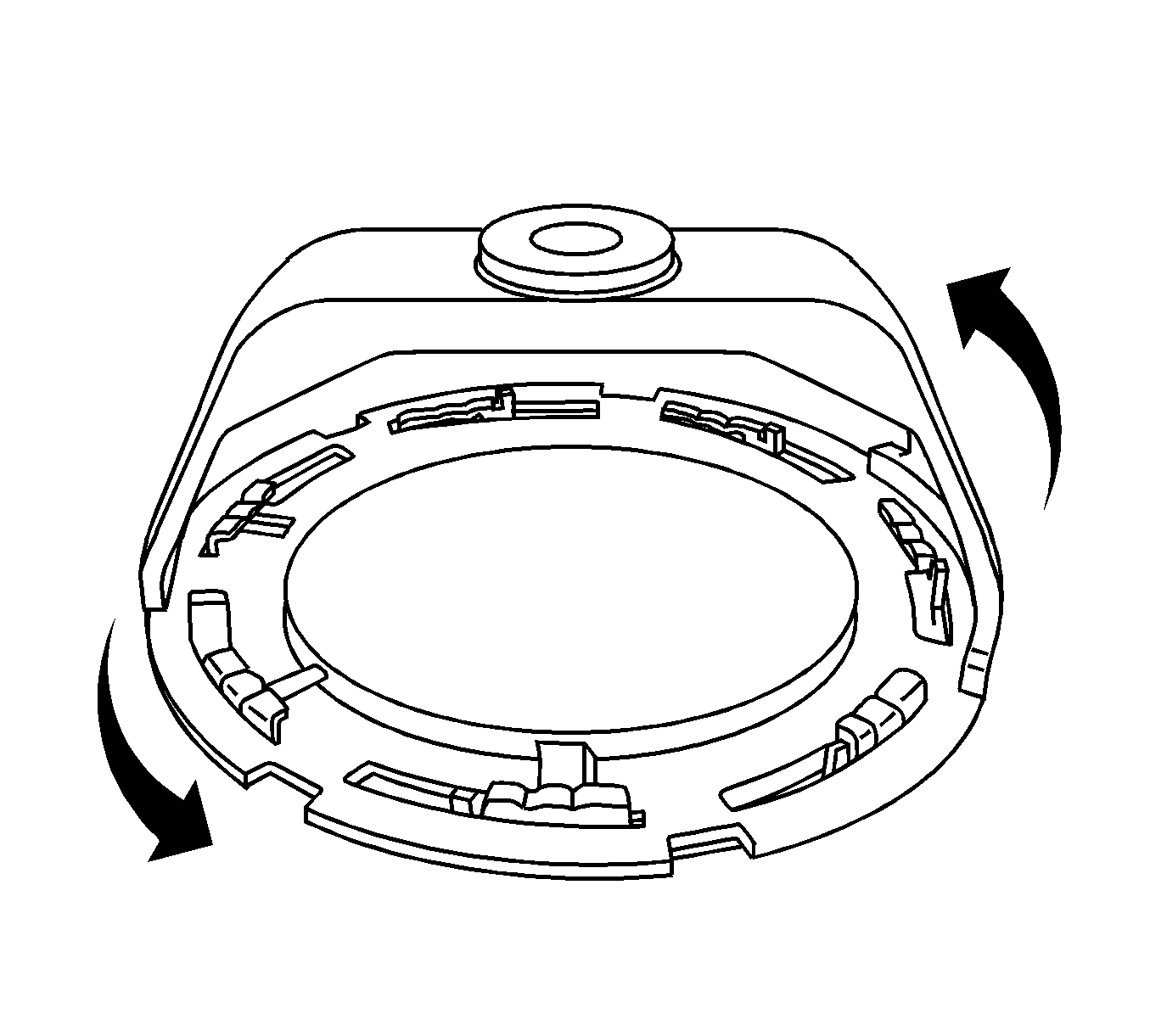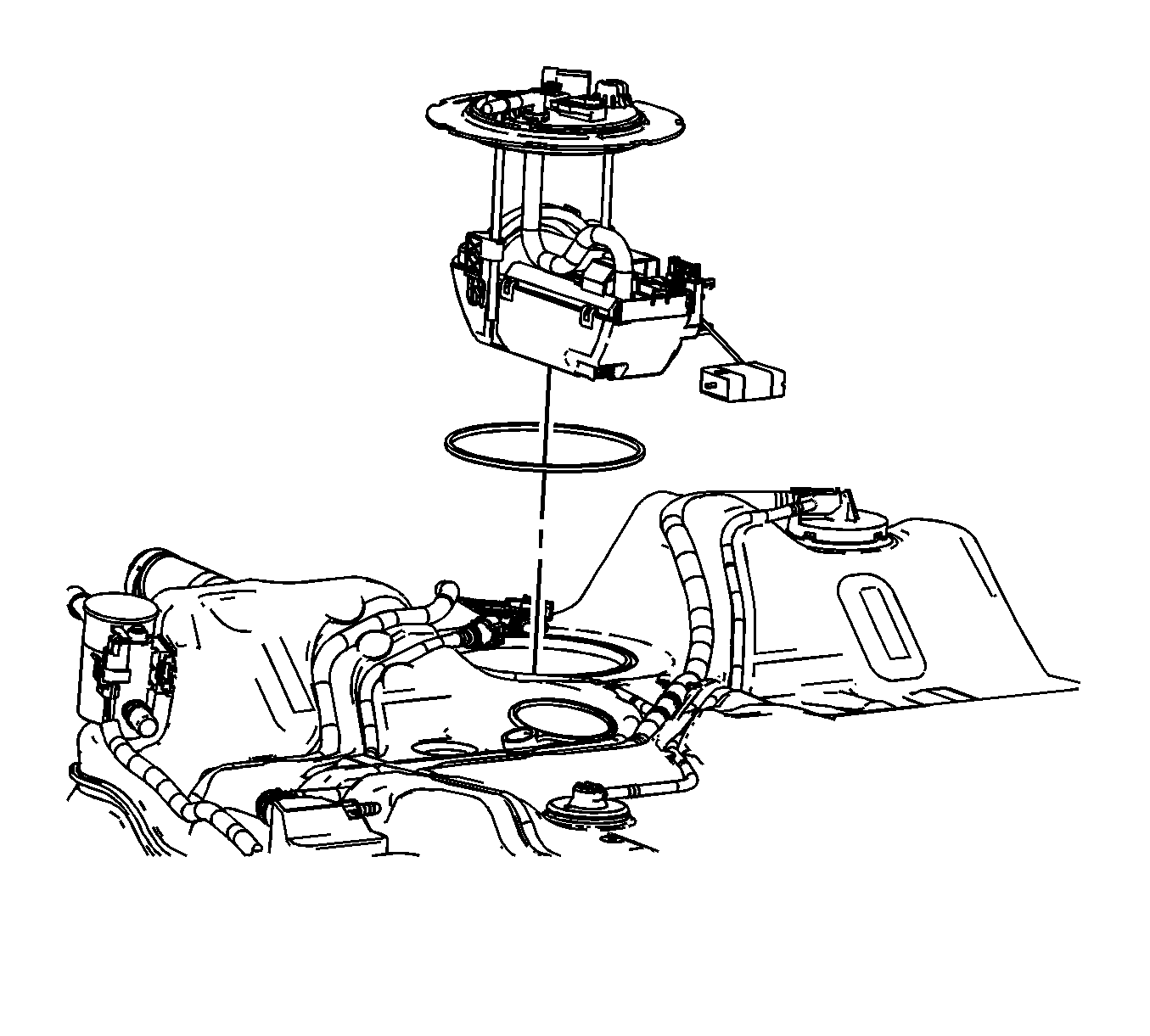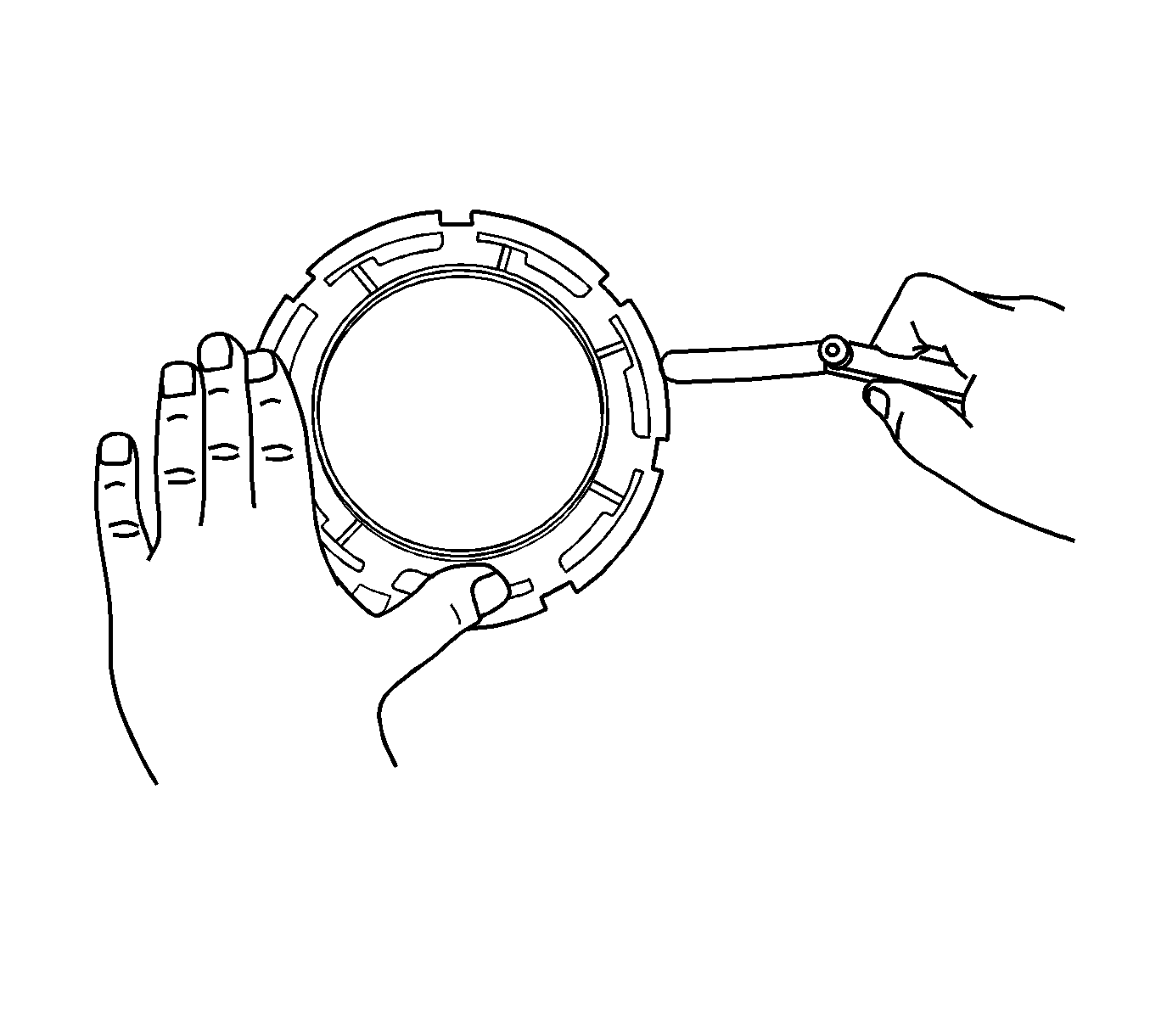Tools Required
J 45722 Fuel Sender Lock Ring Wrench
Removal Procedure
Caution: In order to reduce the risk of fire and personal injury that may result from a fuel leak, always replace the fuel sender gasket when reinstalling the fuel sender assembly.
- Disconnect the negative battery cable. Refer to Battery Negative Cable Disconnection and Connection in Engine Electrical.
- Relieve the system fuel pressure. Refer to Fuel Pressure Relief .
- Drain the fuel tank. Refer to Fuel Tank Draining .
- Raise the vehicle. Refer to Lifting and Jacking the Vehicle in General Information.
- Remove the fuel tank. Refer to Fuel Tank Replacement .
- Disconnect the electrical and ventilation connections on the modular fuel sender assembly cover.
- Use the J 45722 and a long breaker-bar in order to unlock the fuel sender lock ring.
- Raise the fuel sender assembly out of the tank far enough to access the ventilation harness connection on the underside of the module cover.
- Disconnect the ventilation harness quick connect before attempting to fully remove the modular fuel sender assembly.
- Place the lock ring on a flat surface. Measure the clearance between the lock ring and the flat surface using a feeler gage at 7 points.
- If warpage is less than 0.41 mm (0.016 in), the lock ring does not require replacement.
- If warpage is greater than 0.41 mm (0.016 in), the lock ring must be replaced.

Notice: Avoid damaging the lock ring. Use only J-45722 to prevent damage to the lock ring.
Notice: Do Not handle the fuel sender assembly by the fuel pipes. The amount of leverage generated by handling the fuel pipes could damage the joints.
Important: Do NOT use impact tools. Significant force will be required to release the lock ring. The use of a hammer and screwdriver is not recommended. Secure the fuel tank in order to prevent fuel tank rotation.

Important:
• The modular fuel sender assembly may spring up from its position. • When removing the modular fuel sender assembly from the fuel tank, be aware that the reservoir bucket is full of fuel. It must be tipped slightly during removal to avoid damage to the float. Discard modular fuel sender assembly O-ring and replace
it with a new one. • Carefully discard the fuel in the reservoir bucket into an approved container.

Important: Some lock rings were manufactured with "DO NOT REUSE" stamped into them. These lock rings may be reused if they are not damaged or warped.
Important: Inspect the lock ring for damage due to improper removal or installation procedures. If damage is found, install a NEW lock ring.
Important: Check the lock ring for flatness.
Installation Procedure
- Install a new O-ring on the modular fuel sender to tank.
- Connect the ventilation harness inside the fuel tank to the bottom of the modular fuel sender cover.
- Align the cover "paddle" or anti-rotation feature with the corresponding feature in the top of the fuel tank.
- Slowly apply pressure to the top of the spring loaded sender cover until the sender aligns flush with the surface of the tank.
- Use the J 45722 in order to install the fuel sender lock ring. Turn the fuel sender lock ring in a clockwise direction.
- Turn the lock ring until the ring seats on the second detent.
- Connect the electrical and ventilation connections to the modular fuel sender assembly cover.
- Install the fuel tank. Refer to Fuel Tank Replacement .
- Lower the vehicle.
- Refill the tank.
- Connect the negative battery cable. Refer to Battery Negative Cable Disconnection and Connection in Engine Electrical.
- Inspect for fuel leaks through the following steps:


Important: Always replace the fuel sender seal when installing the fuel sender assembly. Replace the lock ring if necessary. DO NOT apply any type of lubrication in the seal groove.
Ensure the lock ring is installed with the correct side facing upward. A correctly installed lock ring will only turn in a clockwise direction.| 12.1. | Turn the ignition to the ON position for two seconds |
| 12.2. | Turn the ignition to the OFF position for ten seconds. |
| 12.3. | Turn the ignition to the ON position |
| 12.4. | Check for fuel leaks. |
